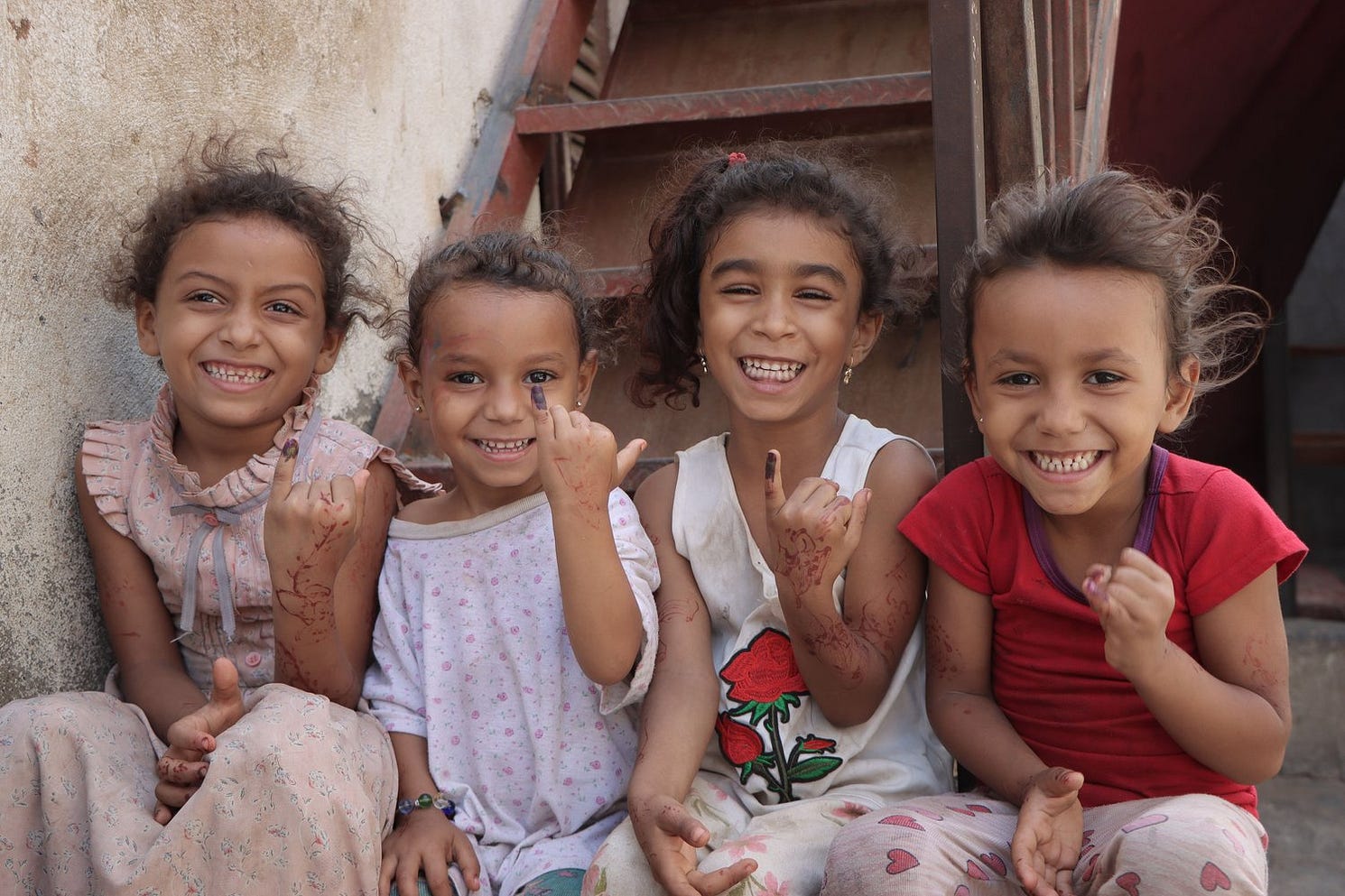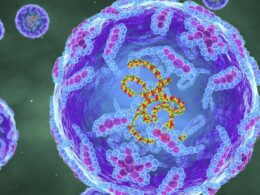Polio Declaration
Accessed on October 12, 2022
Site Editor:
Joaquim Cardoso MSc
Health Transformation Institute (HTI) — research and portal
October 12, 2022
The COVID-19 pandemic has caused the most sustained disruption to public health and immunization in a generation, resulting in a significant decline in the number of children receiving life-saving vaccines.
For the fight to eradicate polio, this reality is combining with other challenges like conflict and climate change-related natural disasters and threatening to reverse hard-won gains.
Polio is a highly infectious disease that can cause irreversible paralysis and has claimed the lives of far too many over the last century.
As recently as 1988, there were an estimated 350,000 annual paralytic wild polio cases across more than 125 countries¹.
But heroic efforts by frontline workers, communities, local governments, and global partners have reached hundreds of millions of children with polio vaccines and reduced polio cases by 99.9%².
These vaccination efforts have prevented an estimated 20 million children from suffering paralysis³.
As recently as 1988, there were an estimated 350,000 annual paralytic wild polio cases across more than 125 countries¹.
These vaccination efforts have prevented an estimated 20 million children from suffering paralysis³.
Today, Pakistan and Afghanistan are the last two remaining countries with endemic wild poliovirus.
his year, as of 14 September 2022, 17 wild polio cases have been recorded in a concentrated outbreak in Pakistan⁴, all isolated to southern Khyber Pakhtunkhwa (KP), and one in the neighboring Paktika province of Afghanistan.
The world now has an historic opportunity to end polio forever.
The world now has an historic opportunity to end polio forever.
The global community’s progress against the disease, however, remains fragile.
In high-risk areas for polio transmission, there are persistent challenges to reaching all children with vaccines.
Conflict and insecurity disrupt services and complicate the difficult jobs of health workers, while vaccine refusals continue due to misinformation and community fatigue made more acute by experiences during the COVID-19 pandemic.
These challenges allow the last pockets of wild polio transmission to persist and contribute to continued outbreaks of variant poliovirus (circulating vaccine-derived poliovirus [cVDPV]), which can emerge in under- or unimmunized communities.
At this unique moment, we, an international group of scientists and health experts, have come together to stress the urgent necessity of eradicating polio and strongly endorse the Global Polio Eradication Initiative (GPEI) 2022–2026 Strategic Plan .
The strategy aims to overcome remaining hurdles, strengthen health systems in affected countries, and deliver a polio-free world by 2026.
As pediatricians, clinicians, epidemiologists, and experts in infectious disease, we assert that:
- 1.Recent challenges underscore the urgent need to eradicate polio.
- 2. With new tools and approaches — including the novel oral polio vaccine — we believe that eradication is achievable.
- 3. Polio eradication efforts significantly strengthen pandemic preparedness, as well as health and immunization systems around the world.
- 4. Polio eradication efforts must be fully funded. Failing to do so would create unacceptable risks and consequences.

1.Recent challenges underscore the urgent need to eradicate polio.
- An outbreak of type 1 wild poliovirus in Malawi and Mozambique this year, genetically linked to polio detected in 2019 in Pakistan, underscores the importance for all countries to prioritize immunization activities to prevent future importations while continuing efforts to permanently interrupt polio transmission in Pakistan and Afghanistan.
- The recent discovery of poliovirus in both the United Kingdom and the United States, countries that eliminated polio decades ago, shows once again that poliovirus anywhere is a threat everywhere.
- The unprecedented floods and displacement of people in Sindh and Baluchistan provinces of Pakistan this year threaten further disruptions to immunization services and reversal of polio gains. This must be avoided at all costs.
- Variant poliovirus outbreaks pose a serious and growing threat in under-immunized populations, particularly in a few hard-to-reach regions in Africa.
2. With new tools and approaches — including the novel oral polio vaccine — we believe that eradication is achievable.
- Polio vaccines are highly effective, as evidenced by the eradication of wild types 2 and 3 in 2015 and 2019, respectively.
Only wild poliovirus type 1 remains.
But it is vaccination that prevents polio, not vaccines.
It is critical to vaccinate every last child to terminate the final chains of transmission and eradicate the disease. - The GPEI 2022–2026 Strategy accelerates the rollout of a new tool — type 2 novel oral polio vaccine (nOPV2) — to help stop variant poliovirus outbreaks more sustainably.
Almost 500 million doses of nOPV2 have already been administered in 21 countries.
After wide-scale use of nOPV2 in 2022, there have been no new cVDPV2 emergences globally, and surveillance data continues to show that the vaccine virus is not mutating back to a virulent form. - The strategy aims to manage vaccine misinformation through new social listening tools, coupled with strong engagement with local communities and influencers to build trust and vaccine acceptance.
- The plan strengthens the program’s partnerships with endemic, affected and high-risk countries, supporting governments to improve the management and operations of vaccination campaigns while better integrating polio activities with routine immunization services and broader health programs that meet the needs of communities.
The GPEI 2022–2026 Strategy accelerates the rollout of a new tool — type 2 novel oral polio vaccine (nOPV2) — to help stop variant poliovirus outbreaks more sustainably.
3. Polio eradication efforts significantly strengthen pandemic preparedness, as well as health and immunization systems around the world.
- The tools, infrastructure, and knowledge developed to eradicate polio have saved countless lives across the globe.
Polio workers have long delivered other important health interventions and services to children, including measles vaccines and other routine immunizations, birth registration, counseling on breastfeeding, Vitamin A supplementation, promotion of handwashing, and the prevention and treatment of diarrhea. - The polio program has established an active global surveillance system that is unique in scale and capacity, including 145 laboratories across 92 countries.
This intricate network is now being used beyond polio eradication, detecting and responding to COVID-19 and other public health threats, including measles, yellow fever, neonatal tetanus and avian influenza.
This extensive, high-quality surveillance system ensures the early detection of outbreaks and timely response campaigns, minimizing the risk and consequences of additional spread. - Since the first days of the COVID-19 pandemic, polio staff, resources and infrastructure in Pakistan, Afghanistan, and many polio-affected countries in Africa have been instrumental as the first line of defense to help combat COVID-19.
The expertise of polio workers and the tools developed to track the virus and deliver vaccines continue to bolster governments as they respond to the pandemic. - An investment in polio is also an investment in health and information systems at large, including strengthening pandemic preparedness and response, as evidenced by the crucial support the polio program has provided in response to other health emergencies.
Fragile states in particular are heavily dependent on polio infrastructure and GPEI funding for immunization and primary health care delivery.
An investment in polio is also an investment in health and information systems at large, including strengthening pandemic preparedness and response, as evidenced by the crucial support the polio program has provided in response to other health emergencies.
4. Polio eradication efforts must be fully funded. Failing to do so would create unacceptable risks and consequences.
- Investing in polio eradication is highly cost-effective and could save an estimated US $33.1 billion this century, compared to the cost of merely controlling the virus and responding continuously to outbreaks⁵.
- Failure to reach eradication and the subsequent termination of the GPEI could result in a global resurgence of polio, leading to significantly more cases of wild poliovirus (WPV) and further spread of variant poliovirus outbreaks⁶.
It would also have a hugely negative impact on general immunization and vaccine equity efforts, especially for expanded programs on immunization (EPI), in countries around the world.
Investing in polio eradication is highly cost-effective and could save an estimated US $33.1 billion this century, compared to the cost of merely controlling the virus and responding continuously to outbreaks
Failure to reach eradication and the subsequent termination of the GPEI could result in a global resurgence of polio, leading to significantly more cases of wild poliovirus (WPV) and further spread of variant poliovirus outbreaks

We, members of the global scientific community, declare our continued conviction that polio eradication is feasible and urgently needed.
We urge:
- Endemic country leaders to stay fully committed and accountable to stop transmission
- Polio-affected country leaders to prioritize urgent, high-quality outbreak response, including expanded vaccination activities, intensified surveillance and needed security for vaccinators and support staff.
- GPEI partners to commit to strengthening integration across polio vaccination, routine immunization, and other vital health initiatives in polio-affected communities
- Partners and donors to fully fund the GPEI 2022–2026 Strategic Plan
- Civil society and community leaders to enhance their advocacy engagements to continue to support efforts to end polio
Achieving and maintaining a polio-free world means every child would be safe from being paralyzed by this devastating preventable disease forever, and no family would ever have to bear the tragedy of polio again.
We must work together and seize this opportunity to consign polio to the history books, once and for all.
Declaration Co-leads:
Dr. Zulfi Bhutta
Chair of Child Global Health, Hospital for Sick Children, Canada, and Professor, Aga Khan University
Pakistan
Dr. Nísia Trindade Lima
President, FIOCRUZ
Brazil
Dr. Rose Gana Fomban Leke
Chair, Africa Regional Certification Commission and Professor, University of Yaounde
Cameroon
Dr. Ilesh Jani
Director-General, Instituto Nacional de Saúde (National Institute of Health)
Mozambique
Dr. Maha Barakat
Director General of the Frontline Heroes Office, Senior Advisor at Mubadala, and former Director General of the Health Authority Abu Dhabi
United Arab Emirates
Dr. Walt Orenstein
Associate Director, Emory Vaccine Center, Emory University
United States
Dr. Naveen Thacker
President-Elect, International Pediatric Association
India
Dr. Oyewale Tomori
Past President, Nigerian Academy of Science and Professor, Redeemer’s University
Nigeria
Dr. George Gao
Vice President, National Natural Science Foundation of China and Dean, Medical School of the University of Chinese Academy of Sciences
China
Dame Sally Davies
Master of Trinity College, Cambridge, and former Chief Medical Officer for England
United Kingdom
References:
- CDC: Epidemiology and Prevention of Vaccine-Preventable Diseases, Chapter 18: Poliomyelitis. https://www.cdc.gov/vaccines/pubs/pinkbook/polio.html
- WHO: Poliomyelitis Fact Sheet. https://www.who.int/news-room/fact-sheets/detail/poliomyelitis
- GPEI Investment Case 2022–2026. https://polioeradication.org/wp-content/uploads/2022/04/GPEI-Investment-Case-2022-2026-Web-EN.pdf
- GPEI: Polio This Week, 14 September 2022. https://polioeradication.org/wp-content/uploads/2022/07/weekly-polio-analyses-WPV-20220726.pdf
- GPEI Investment Case 2022–2026. 24 April 2022. https://polioeradication.org/wp-content/uploads/2022/04/GPEI-Investment-Case-2022-2026-Web-EN.pdf
- WHO: Poliomyelitis: Does polio still exist? Is it curable? 14 March 2018. https://www.who.int/news-room/questions-and-answers/item/does-polio-still-exist-is-it-curable
Originally published at https://www.poliodeclaration.org.
REFERENCE PUBLICATION

WHO
Polio Eradication Strategy 2022–2026
Suggested citation.
Polio Eradication Strategy 2022–2026: Executive summary. Geneva: World Health Organization; 2021













